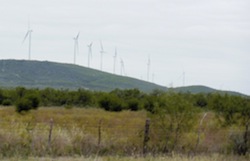 Solectria Renewables has announced today that SolarOne Financial, has chosen their Solectria’s PVI 60-95KW inverters to power the 1.2MW solar PV installation at Fleamasters Market in Fort Myers, Florida.
Solectria Renewables has announced today that SolarOne Financial, has chosen their Solectria’s PVI 60-95KW inverters to power the 1.2MW solar PV installation at Fleamasters Market in Fort Myers, Florida.- Genomatica and DuPont Tate & Lyle Bio Products Company, LLC have announced the first successful commercial- scale production of 1,4-Butanediol (BDO) using a bio-based manufacturing process.
- CalCharge and San Jose State University (SJSU) are teaming up to launch a “battery university” in the high-tech capital of the world – Silicon Valley. Battery university courses—to be offered through SJSU’s professional education program—will educate a specialty workforce needed now for the rapidly growing battery industry. Classes are expected to start this summer in partnership with SJSU’s engineering college, which produces more engineering professionals to Silicon Valley than any other university.
- According to the report, “Reaching for the Sun: How San Antonio and Austin are showing that solar is a powerful energy option for Texas,” sponsored by Environment Texas Research & Policy Center, the Metroplex, Dallas and Fort Worth, lag behind in solar power. The report finds there are 972 kilowatts (KW) of solar energy that have been installed in Fort Worth and 1,243 KW in Dallas, in part from incentives from the local utility Oncor. The report finds that the municipally owned utilities in the two cities installed four times more solar photovoltaic (PV) capacity than the rest of Texas combined or 85 percent of the state total. The report credits the cities’ strong policies that encourage solar power on residences and businesses, and in utility-scale installations.
- E2 Technologies (E2T), a joint venture between the University of Dayton Research Institute and Concurrent Technologies Corporation has been awarded a five-year Air Force Research Laboratory contract with a $99 million ceiling for research, testing and transition of new energy and environmental technologies to the Air Force and other Department of Defense agencies. The contract included an initial award of $1.5 million for evaluation, testing and installation of advanced renewable energy storage and management technologies at the Maui High Performance Computing Center.
- Real Goods Solar has appointed Tony DiPaolo as Chief Financial Officer, succeeding interim CFO Angy Chin who will remain in an advisory role during the transition. DiPaolo previously served as president and chief financial officer of Incentra Solutions (now Presilient).
Anacaho Wind Farm Dedicated
 E.ON Climate & Renewables (EC&R) has officially dedicated its new Anacacho Wind Farm. The project, located in Kinney County, Texas, is approximately 14 miles southeast of Brackettville and consists of 55 Vestas 1.8 megawatt (MW) turbines providing 100 MW of power. Anacacho Wind Farm began commercial operation in December.
E.ON Climate & Renewables (EC&R) has officially dedicated its new Anacacho Wind Farm. The project, located in Kinney County, Texas, is approximately 14 miles southeast of Brackettville and consists of 55 Vestas 1.8 megawatt (MW) turbines providing 100 MW of power. Anacacho Wind Farm began commercial operation in December.
“We are honored to be a part of the local community and we look forward to providing economic support and renewable, homegrown energy for many years to come,” said Steve Trenholm, CEO, EC&R North America. “Wind farms create jobs, and provide an economic shot in the arm to farmers, ranchers, and rural communities across America.”
The company says it has invested more than $5 billion dollars in the U.S. in the last five years. Locally, this project will contribute more than $17 million in local taxes, while paying $8 million in local salaries and more than $34 million to landowners. This is the company’s 18th operational wind farm in North America.
“Airnasium” Takes School Off Grid
A new “airnasium,” or solar panel-lined roof on a metal structure constructed by Allied Steel Buildings has helped take the Virgin Islands Montessori School and International Academy off the electrical grid. The school is located in St. Thomas and is the only school in the territory completely powered by solar energy. Electrical costs for the school were nearly $84,00o per year, but school officials say with the new solar power system and steel structure, that cost is now zero.
 “The school was undergoing a major expansion, and we were brought in to provide design and build options for the gymnasium and other structures,” said Mike Stock, who spearheaded the project for Allied Steel Buildings’ Caribbean and Latin American Department. “We worked with them on the design so they could get off the grid.”
“The school was undergoing a major expansion, and we were brought in to provide design and build options for the gymnasium and other structures,” said Mike Stock, who spearheaded the project for Allied Steel Buildings’ Caribbean and Latin American Department. “We worked with them on the design so they could get off the grid.”
The 9,000-square-foot outdoor structure has no walls and will serve multiple purposes – both an auditorium and a sports facility. There is a playground for toddlers with sand on one side, and also has a dedicated area that can be set up with a stage for special events. The solar panels on the roof of the building have an output of about 13,000 kilowatt/hours of power a month. When combined with other solar-powered projects, that’s enough to power the entire school. The new building is also used to collect rain water, and has the capacity to provide 25,000 gallons of water for the school to use on irrigation.
To celebrate the new building, the school held a Solar Splash Concert with a number of local bands performing at an eco-fair event under the roof lined with solar panels. At the event, attendees got the chance to learn more about how they can start to save on energy bills while at the same time helping the environment.
ROUSH Reveals 3 New Ford AutoGas Fuel Systems
ROUSH CleanTech is now offering three new propane autogas fuel systems for Ford F-59, F-53 and E-450 stripped chassis. The company is the first Ford Qualified Vehicle Modifier (QVM) to offer fuel systems for these platforms.
 According to ROUSH, the Ford F-59 commercial step van chassis and the Ford E-450 stripped chassis adapt to numerous fleet delivery applications, such as bakery, textile, multi-stop package delivery service, linen and medical services. The company says the Ford F-53 platform offers a flexible commercial platform for trolleys, lunch trucks and more. The size and cargo capabilities of all three platforms are customizable for specific business vehicle applications.
According to ROUSH, the Ford F-59 commercial step van chassis and the Ford E-450 stripped chassis adapt to numerous fleet delivery applications, such as bakery, textile, multi-stop package delivery service, linen and medical services. The company says the Ford F-53 platform offers a flexible commercial platform for trolleys, lunch trucks and more. The size and cargo capabilities of all three platforms are customizable for specific business vehicle applications.
“With excellent vehicle range and affordable price points, these platforms are a home run for hub and spoke model fleets,” said Todd Mouw, vice president of sales and marketing for ROUSH CleanTech. “These commercial stripped chassis platforms operating on propane autogas can help companies save $35,000 or more in fuel and operating expenses over the vehicle’s lifetime. And whether fleets use public fueling stations or install onsite private refueling, they’ll find refueling is inexpensive and easy.”
Built on a 2013 model year or newer chassis with a 6.8-liter, V10 engine, the ROUSH CleanTech propane autogas powered Ford F-53 and F-59 feature a 67-usable gallon propane autogas fuel tank. The ROUSH CleanTech propane autogas powered Ford E-450 stripped chassis comes equipped with a 41-usable gallon propane autogas fuel tank.
Ethanol Opponents Appealing to Supreme Court
Oil companies and food manufacturers are taking their lawsuit seeking to ban 15% ethanol (E15) fuel to the U.S. Supreme Court.
 Lower courts have already rejected the attempt by the American Petroleum Institute (API) and the Grocery Manufacturers Association (GMA) to reverse the Environmental Protection Agency (EPA) decision allowing E15 in the marketplace as a consumer choice for vehicles newer than 2001.
Lower courts have already rejected the attempt by the American Petroleum Institute (API) and the Grocery Manufacturers Association (GMA) to reverse the Environmental Protection Agency (EPA) decision allowing E15 in the marketplace as a consumer choice for vehicles newer than 2001.
“We now know why gas prices keep going up and up – to fund unnecessary Big Oil lawsuits to protect their monopoly on the fuel market,” said Renewable Fuels Association president and CEO Bob Dinneen. “I wonder if food prices will spike as well to cover the cost of this Supreme Court challenge?”
“There is nothing unexpected in this announcement; in fact it is not even news. We know that the oil companies are going to do everything within their power to restrict access of a price competitive product,” said Growth Energy CEO Tom Buis.
“Big Oily Foods’ cozy and self-serving relationship to do whatever it takes to stop consumers from access to safe and affordable E15 fuel is dripping with highly-saturated desperation,” added Brian Jennings, executive director of the American Coalition for Ethanol (ACE). ““With gasoline prices on the rise for 35 days in a row, American-made E15 will help drivers save money at the pump.”
Iowa Renewable Fuels Association (IRFA) Executive Director Monte Shaw notes that if the lawsuit were successful, federal law would mandate that Americans buy only fuel containing a minimum of 90 percent petroleum. “Big Oil has made clear that nothing will stand in the way of its quest to protect the federal petroleum mandate and use government regulations to shield itself from market competition,” said Shaw.
The additional legal challenge comes on top of legislation introduced last week that would block continued commercial sales of E15.
Grading Vilsack’s First Term
Our latest ZimmPoll asked the question, “What grade would you give Ag Sec. Vilsack during his first term?”
Our poll results: The majority of you at twenty-nine percent gave Vilsack an A. Twenty-two percent said D; eighteen percent said B; seventeen percent said C; and fourteen percent said F. Since the poll grades were similar across the board we decided to calculate his overall average. On his first term paper Vilsack scored a C+.
Our new ZimmPoll is now live and asks the question, “Does warranty influence your decision to purchase new equipment?” When shopping for new equipment there are many factors to consider that may make or break a purchase decision. Is warranty one of the top considerations? Let us know.
How High Will Gas Prices Go? Seriously, How High?
Ugh! I filled up my “economical” car today with gas for the low price of $41! It would have cost even more but I used ethanol, which in Iowa saves me nearly 10 cents a gallon. What I find so amazing is that we’re supposed to have so much oil, yet strangely despite a “surplus,” gas prices keep getting higher and higher. So what am I going to do about this? I’m heading to D.C. to participate in the American Coalition for Ethanol’s (ACE) Biofuels Beltway Fly-in.
 In case you haven’t heard, I’m on a mission for lower prices at the pump and I know that consumer fuel choice will provide this. So does ACE. I also know that every voice counts and our elected leaders in D.C. need to hear them. So does ACE.
In case you haven’t heard, I’m on a mission for lower prices at the pump and I know that consumer fuel choice will provide this. So does ACE. I also know that every voice counts and our elected leaders in D.C. need to hear them. So does ACE.
There is a lot on the line for the biofuels industry this year. There are well-funded attacks underway against the Renewable Fuel Standard (RFS) and E15. These are two issues the ACE team, along with dozens of people from across the country will be speaking with the DC faction about, in their own words, telling their own stories.
“With nearly 100 new members of Congress taking office earlier this year, many with little exposure to ethanol, we need ethanol advocates in Washington more than ever,” says Shannon Gustafson, director of strategic projects for ACE. “The attacks on the RFS and E15 have been mounting, and ACE hopes to meet with a record number of Congressional offices to spread the message that the RFS is working and promoting consumer fuel choice.”
But the industry can’t do this if there is not a swarm of people on the ground in D.C. We need LOTS of people to come along and tell their stories of how the biofuels industry has affected them. I am challenging the industry to have at least one ethanol advocate from every state – yeah, that means you too Alaska and Hawaii, to join ACE and others in DC this March 13-14th. To date, there are 20 people registered from Minnesota, Iowa, Missouri and Nebraska. This is a good start but this industry can do MUCH better.
The time to register is now. To participate, visit www.ethanol.org, or contact Shannon Gustafson at (605) 334-3381 ext. 16 or via email.
New Report Shows Wind Energy Continues to Expand
According to a report from the Global Wind Energy Council (GWEC), global installed wind energy capacity increased by 19 percent in 2012 to 282,000 megawatts (MW). Canada remains a global wind energy leader as it experienced the 9th largest increase in installed capacity in 2012 (936 MW). Both China and the United States, the world’s wind energy leaders, installed more than 13,000 MW of new capacity in 2012.
“While China paused for breath, both the US and European markets had exceptionally strong years,” said Steve Sawyer, Secretary General of GWEC. “Asia still led global markets, but with North America a close second, and Europe not far behind.”
 Canada now ranks 9th globally in total installed capacity with more than 6,500 MW of wind energy in operation – providing enough power to meet the annual needs of almost 2,000,000 Canadian homes. Ontario is the Canadian leader in the production of clean wind energy with more than 2,000 MW of installed capacity now supplying over 3 percent of the province’s electricity demand. Both Ontario and Quebec will lead the country with new installations of clean wind energy in 2013 as the Canadian Wind Energy Association (CanWEA) expects to see a record year for new installations with the addition of almost 1,500 MW of new capacity – driving over $3 billion in new investments.
Canada now ranks 9th globally in total installed capacity with more than 6,500 MW of wind energy in operation – providing enough power to meet the annual needs of almost 2,000,000 Canadian homes. Ontario is the Canadian leader in the production of clean wind energy with more than 2,000 MW of installed capacity now supplying over 3 percent of the province’s electricity demand. Both Ontario and Quebec will lead the country with new installations of clean wind energy in 2013 as the Canadian Wind Energy Association (CanWEA) expects to see a record year for new installations with the addition of almost 1,500 MW of new capacity – driving over $3 billion in new investments.
The growth of wind energy development in Ontario and Quebec continues to have strong public support. According to a survey, 69 percent of Ontarians agreed that, “Ontario should be a leader in wind and solar energy production,” compared to only 20 percent that disagreed. The same poll also found that solar and wind energy scored highest in a top-of-mind question about Ontarians’ preferred choice for new electricity generation.
“Wind energy continues to enjoy strong majority support as a choice for new electricity generation in Ontario and Quebec because it is understood to be both good for the environment and a provider of significant economic benefits for local economies that host developments,” said Robert Hornung, president of CanWEA. “Less well known is the fact that wind energy is also now cost-competitive with virtually every option for new electricity generation. It is for these reasons that wind energy continues to be the fastest growing mainstream source of electricity in the world.”
The rapid growth of wind energy in Canada is also reflected south of the border where the American wind industry had its best year ever in 2012, with more than 13,000 MW installed. The extension of the Production Tax Credit (PTC) in the U.S. means that although the market will slow substantially in 2013, it is unlikely to be as much of a slowdown as originally expected, said Sawyer.
Consortium to Develop 2 Solar Projects in Ecuador
SunWize Technologies is developing two major solar photovoltaic projects in the Republic of Ecuador in conjunction with Solexica Energy Corporation, JCM Capital and Radical Energy, Inc. that have created a North American Consortium to promote renewable energy and energy efficiency. The two photovoltaic projects—known as Condor Solar and Solarconnection, represent 30 megawatts (AC) and 20 megawatts (AC) respectively. Combined, these installations will have an estimated peak capacity of 62.5 megaswatts (DC) and will feature approximately 234,000 solar panels, multiple inverters and a substation to process and distribute energy to over 100,000 households in northern Ecuador.
 “Photovoltaic solar energy doesn’t pollute air, soil or water, making it a sustainable and environmentally-friendly choice for energy production worldwide. As members of the North American Consortium, we look forward to providing the people of Ecuador with an energy resource that will serve them well in the years ahead,” said Scott Tonn, CEO of SunWize.
“Photovoltaic solar energy doesn’t pollute air, soil or water, making it a sustainable and environmentally-friendly choice for energy production worldwide. As members of the North American Consortium, we look forward to providing the people of Ecuador with an energy resource that will serve them well in the years ahead,” said Scott Tonn, CEO of SunWize.
Both the Condor Solar and Solarconnection projects will be constructed in a region of the Andes Mountains called Canton Pedro Moncayo. According to SunWize, the area’s average temperature allows solar panels to operate at optimum efficiency, while its altitude and location near the equator offer abundant sunshine with few impediments. In addition to its climate, there are other factors which make Pedro Moncayo an ideal location for solar projects. During the development of both solar projects, surrounding communities will host activities to promote and ensure sustainable development throughout the region. These activities will include training programs focused on renewable energy, health, sustainable agriculture, and arts and culture.
SunWize President and COO David Kaltsas, added, “Pedro Moncayo’s geographic location will help these projects be both economical and efficient. However, the area is also surrounded by a number of tourist attractions, including the Mojanda stratovolcano. As a result, Pedro Moncayo is uniquely positioned to serve as a model of sustainable energy use that thousands of tourists will have the opportunity to discover and appreciate in the years ahead.”
VayuSap Project Wins $1M Grant
India-based VayuGrid and Zambia-based BetterWorld Energy are partnering on VayuSap biofuel development zones in Zambia. The development zones, based on Elite VayuSap trees, will produce sustainable energy, local jobs, and reforest and rehabilitate degraded lands which will, in turn, according to VayuGrid, raise living standards for the local communities and replace imports of petroleum fuels across the country.
 The Energy and Environment Partnership in Southern and Eastern Africa (EEP-SEA), funded by the governments of Finland, Austria, UK, and hosted by the Development Bank of Southern Africa, selected the VayuSap project for a phase 1 grant that award the project up to $1 million in funds over the next five years. According to VayuGrid, the VayuSap project is based on a sustainable networked model to enable rural communities to plant VayuSap trees on degraded and deforested land, and to link these plantations to central commercial plantations and processing hubs.
The Energy and Environment Partnership in Southern and Eastern Africa (EEP-SEA), funded by the governments of Finland, Austria, UK, and hosted by the Development Bank of Southern Africa, selected the VayuSap project for a phase 1 grant that award the project up to $1 million in funds over the next five years. According to VayuGrid, the VayuSap project is based on a sustainable networked model to enable rural communities to plant VayuSap trees on degraded and deforested land, and to link these plantations to central commercial plantations and processing hubs.
“Over 70 percent of Zambia’s energy needs currently come from forest biomass,” said Dr. Benjamin Warr, Founder and Managing Director of BetterWorld Energy. “The VayuSap tree together with our development zone business model are excellent solutions to drastically turn-around the environmental degradation while reducing poverty and increasing energy access.”
Doug Peterson, CEO of VayuGrid, added, “Zambia is going through a dramatic transformation as the country looks at economic diversification. Our partnership with BetterWorld Energy will address the needs of sustainable energy in an ROI based model to benefit all players in the value chain, including the rural communities, the energy consumers, and the government.”



